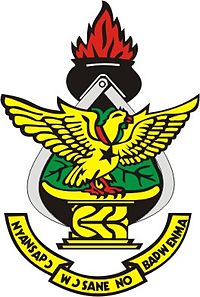Kwame Nkrumah University
Kwame Nkrumah University of Science & Technology
Kwame Nkrumah University of Science and Technology is a university in Kumasi, Ghana. It is the second public university established in the country. The university has its roots in the plans of the Asantehene Agyeman Prempeh I to establish a university in Kumasi as part of his drive towards modernization of his kingdom. This plan never came to fruition due to the clash between British empire expansion and the desire for King Prempeh I to preserve his kingdom’s independence.
However, his younger brother and successor, King Agyeman Prempeh II, upon ascending to the Golden Stool in 1935, continued with this vision. Events in the Gold Coast in the 1940s played into his hands. First there was the establishment of the University College of the Gold Coast. Second there were the 1948 riots and the consequent Watson Commission report which recommended that a university of sciences be established in Kumasi. Thus, in 1949, the dream of the Prempehs became a reality when building started on what was to be called the Kumasi College of Technology.
The Kumasi College of Technology offered admission to its first students to the engineering faculty in 1951 (they entered in 1952), and an Act of Parliament gave the university its legal basis as the Kumasi College of Technology in 1952. The nucleus of the college was formed from 200 teacher training students transferred from Achimota in the Greater Accra Region. The college was affiliated to the University of London. In 1961, the college was granted full university status.
The main university campus, which is about seven square miles in area, is about eight miles (13 km) to the east of Kumasi, the Ashanti Regional capital.
Economic Indicators
Economic indicators provide a snapshot of the economy’s health. Just as a doctor checks the vital signs of a patient, an economist might check the vital signs of the economy by looking at gross domestic product (GDP), consumer price index (CPI) or the unemployment rate. The Federal Open Market Committee (FOMC), the policy-making body of the Federal Reserve System, examines many economic indicators prior to determining monetary policy. The indicators available through the following links are examples of some of the factors the FOMC considers before issuing its directives on monetary policy.

Leave a comment